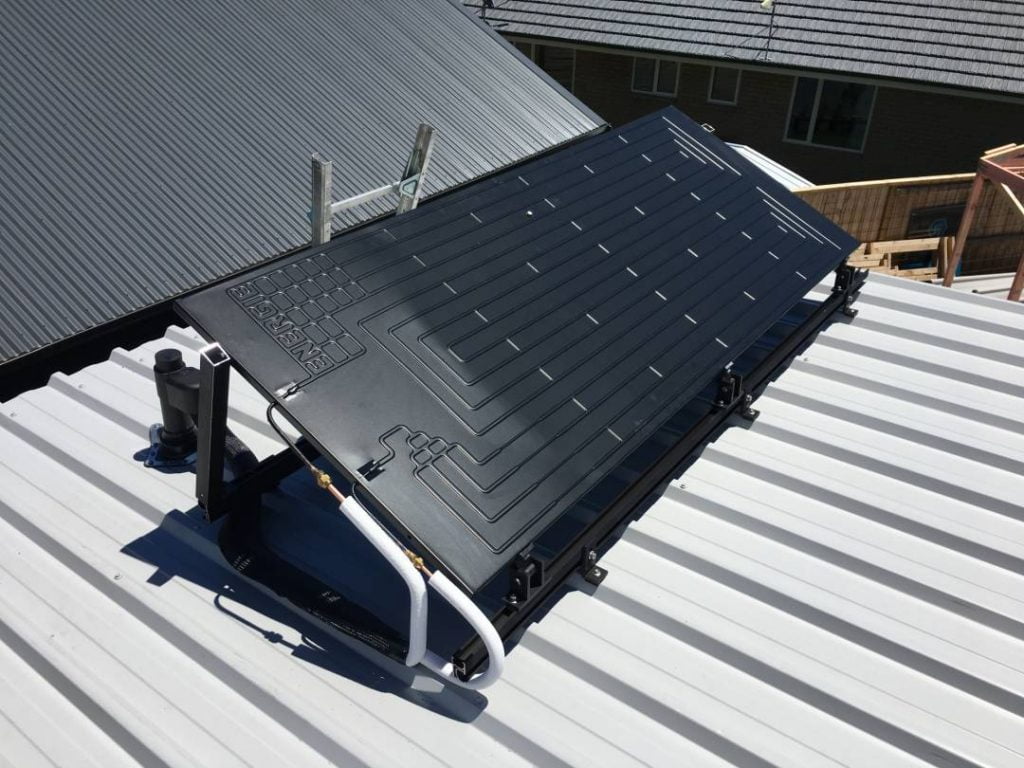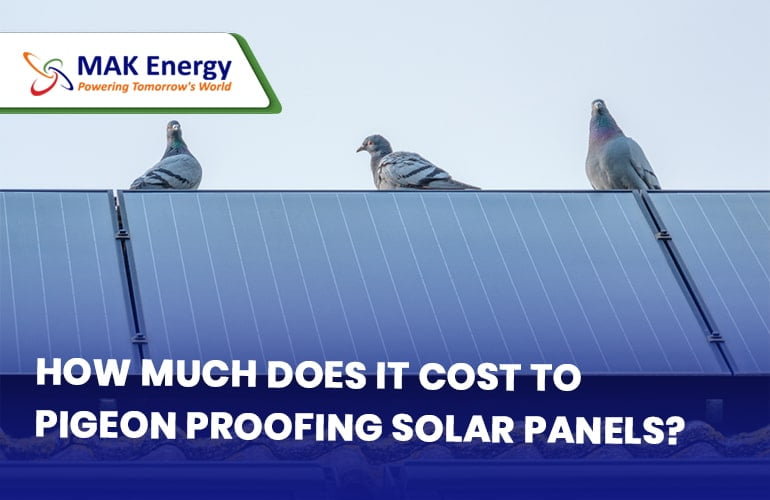Last updated: January 18th, 2024 at 04:52 am
Would you like a solar panel that can provide you with hot water throughout the year, day and night, regardless of rain, snow, or shine? If so, you’re in for a surprise. Thermodynamic solar panels are designed to heat water through the day and even at night by absorbing heat from the surrounding air.
- What are Thermodynamic Panels?
- How Do Thermodynamic Panels Work?
- Benefits of Thermodynamic Solar Panels
- Are Thermodynamic Systems Similar to Air Source Heat Pumps?
- How Efficient are Thermodynamic Solar Panels?
- How Much Does a Thermodynamic Panel Cost?
- Thermodynamic Panel Considerations
- Thermodynamic Panel Maintenance
- Thermodynamic Panel Installation
- Do I Require a Hot Water Cylinder for Thermodynamic Solar Panels?
- How Much Could You Save With Thermodynamic Panels?
- Thermodynamic Panel Mounting Method
- Summary
Thermodynamic solar panels resemble traditional solar panels in appearance, but instead of harnessing energy from the sun, they extract heat from the outdoor air. They operate more similarly to a solar air source heat pump than a solar thermal panel. By absorbing heat from the atmosphere and converting it into a gas, they utilize reverse refrigerator technology to generate hot water through a thermodynamic system. Though the technology is not as familiar for domestic use, thermodynamic panel have numerous benefits. In this article, we will delve into the knowledge of thermodynamics, understanding what it is, how it works, and provide essential information about thermodynamic panels.
What are Thermodynamic Panels?
Thermodynamic panels are a combination of air source heat pump and solar thermal panels. They may resemble solar panels in appearance, but their purpose is completely different; they function as a heat pump. Thermodynamic panels can provide hot water throughout the year, regardless of weather conditions and time. They operate even at night by absorbing heat from the air and transferring it to a refrigerant. Despite their ability to provide hot water 24/7, this technology has not gained the same momentum as heat pumps and solar thermal panels.
How Do Thermodynamic Panels Work?

Thermodynamic panels absorb heat from the surrounding air, regardless of whether it is day or night, sunny or cloudy. They do not rely solely on direct sunlight like traditional solar panels. The absorbed heat is transferred to a refrigerant fluid contained within the panel. This causes the refrigerant to vaporize and become a gas. The gas is then compressed, which increases its temperature even further. The hot gas is passed through a heat exchanger where it releases its heat energy to the water. After releasing its heat, the refrigerant condenses back into a liquid state.
This process generates a significant amount of heat that is transferred to the water, thus raising its temperature. The liquid refrigerant then flows back to the thermodynamic panel to repeat the cycle, absorbing more heat from the air and continuing the process of heating the water.
Benefits of Thermodynamic Solar Panels
Thermodynamic panels can provide various benefits, yet the installation rate of thermodynamic solar panels remains relatively low. Here are some important benefits of thermodynamic solar panels:
- Provide hot water 24/7: Thermodynamic panels ensure a constant supply of hot water, regardless of the time of day.
- Work in any weather condition: Whether it’s sunny, cloudy, or rainy, thermodynamic panels can operate efficiently and generate hot water.
- Don’t require direct sunlight: Unlike traditional solar panels, thermodynamic panels do not rely on direct sunlight to function effectively.
- Work well even at -15°C: Thermodynamic panels can work efficiently even in colder temperatures as low as -15°C.
- Require minimal maintenance: Thermodynamic panels typically require very little maintenance, reducing the need for frequent servicing.
- Operate quietly: Thermodynamic panels operate quietly, minimizing any noise disturbance.
- Can be fitted to the side of a home: Thermodynamic panels can be installed on the side of a home, providing flexibility in their placement.
Are Thermodynamic Systems Similar to Air Source Heat Pumps?
In general, both air source heat pumps and thermodynamic panels are used for the same purpose of absorbing heat from the air and transferring it from one place to another. However, there are some differences in how they work. Air source heat pumps consist of a continuously running fan that consumes more electricity to operate. In contrast, thermodynamic panels utilize a compressor that requires comparatively less electricity than an air source heat pump. Generally, air source heat pumps are more efficient than thermodynamic systems.
They are designed to operate within a specific temperature range, allowing them to extract more heat from the air. Thermodynamic systems, on the other hand, can transfer heat over a wider range of temperatures, making them more versatile. However, this versatility comes at the cost of reduced efficiency in certain cases.
How Efficient are Thermodynamic Solar Panels?
Thermodynamic solar panels are generally more efficient than solar thermal panels. They have a coefficient of performance (COP) ranging from 1.5 to 2.2. This indicates that for each unit of electricity consumed by the compressor, the panels can produce 1.5 to 2.2 units of heat. The efficiency of thermodynamic panels can also be influenced by the choice of refrigerant. Certain refrigerants are more effective at extracting heat than others.
How Much Does a Thermodynamic Panel Cost?
Unlike solar thermal panels, thermodynamic solar panels are more expensive. The cost of a single thermodynamic panel typically ranges from £4500 to £5500. This cost includes the additional components and installation expenses. For larger homes, a greater number of thermodynamic panels will be required, leading to increased costs.
Thermodynamic Panel Considerations
Thermodynamic panels can provide numerous benefits, but it is important to consider that the technology is still relatively unproven compared to other systems due to its complexity and potential issues. Here are some considerations you’ll need to make:
- Electricity consumption: Thermodynamic panels require electricity to run the compressor, which can result in higher operating costs.
- Cost: Each panel can range from £4500 to £5500., making them relatively expensive compared to other renewable energy technologies.
- Installation complexity: The installation process for thermodynamic panels is intricate and can be prone to errors if not carried out correctly.
- Incentives: As of now, thermodynamic panels may not be eligible for any specific incentives or subsidies.
Thermodynamic Panel Maintenance
Thermodynamic panels require minimal maintenance. However, it is advisable to schedule a general check-up once a year to ensure that the system is running perfectly and efficiently. Keeping the panels clean is important, and this can be achieved by simply using water or letting rainwater naturally clean them.
Thermodynamic Panel Installation
One of the greatest advantages of thermodynamic panels is that they do not require direct sunlight and can be installed without occupying roof space. They can be mounted on the side of a property or even on a roof space. However, in many cases, homeowners prefer to install them on the side of their homes.

Do I Require a Hot Water Cylinder for Thermodynamic Solar Panels?
Similar to solar thermal panels and heat pumps, the utilization of thermodynamic panels also requires a hot water cylinder. This cylinder serves as the storage unit for the heated water produced by the thermodynamic panel system. It ensures a readily available supply of hot water for various household needs. The combination of thermodynamic panel and a hot water cylinder allows for efficient and continuous access to hot water throughout the day and night, regardless of weather conditions.
How Much Could You Save With Thermodynamic Panels?
The initial installation cost of thermodynamic solar panels is higher compared to other heating systems. However, their operational costs are significantly lower. These panels require less electricity to heat the hot water, resulting in potential savings of up to 70% on your electricity bill. Additionally, the return on investment for thermodynamic panels is relatively faster compared to other renewable energy technologies. The amount of money saved will depend on factors such as the system size, hot water requirements, electricity costs, and the performance of the thermodynamic panels.
Thermodynamic Panel Mounting Method
Wall mounting is the most common and cost-effective method of installing thermodynamic solar panels. The panels can be easily affixed to the wall using six stainless brackets. Even with multiple panels, they can be rack-mounted since they don’t require direct sunlight to generate heat. Alternatively, thermodynamic panels can also be installed on roof spaces, similar to solar PV systems.
Summary
Thermodynamic solar panels offer the advantage of providing hot water throughout the day, regardless of the prevailing weather conditions. While they may be considered relatively expensive, their numerous benefits and lower maintenance requirements make them an attractive choice for homeowners. The average cost of installing a single thermodynamic solar panel ranges from £4500 to £5500. Furthermore, their efficiency surpasses that of many other heating systems, offering increased energy savings. With their ability to harness heat from the surrounding air, thermodynamic solar panels ensure a consistent supply of hot water, making them a reliable and efficient option for residential use.




